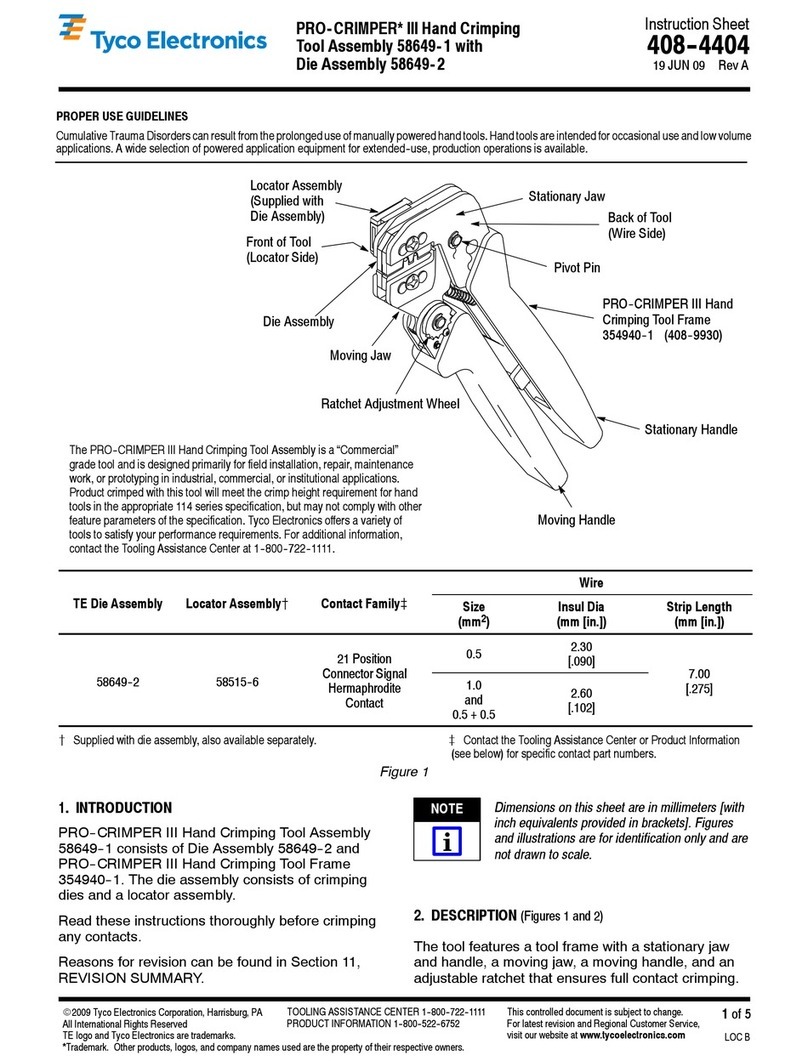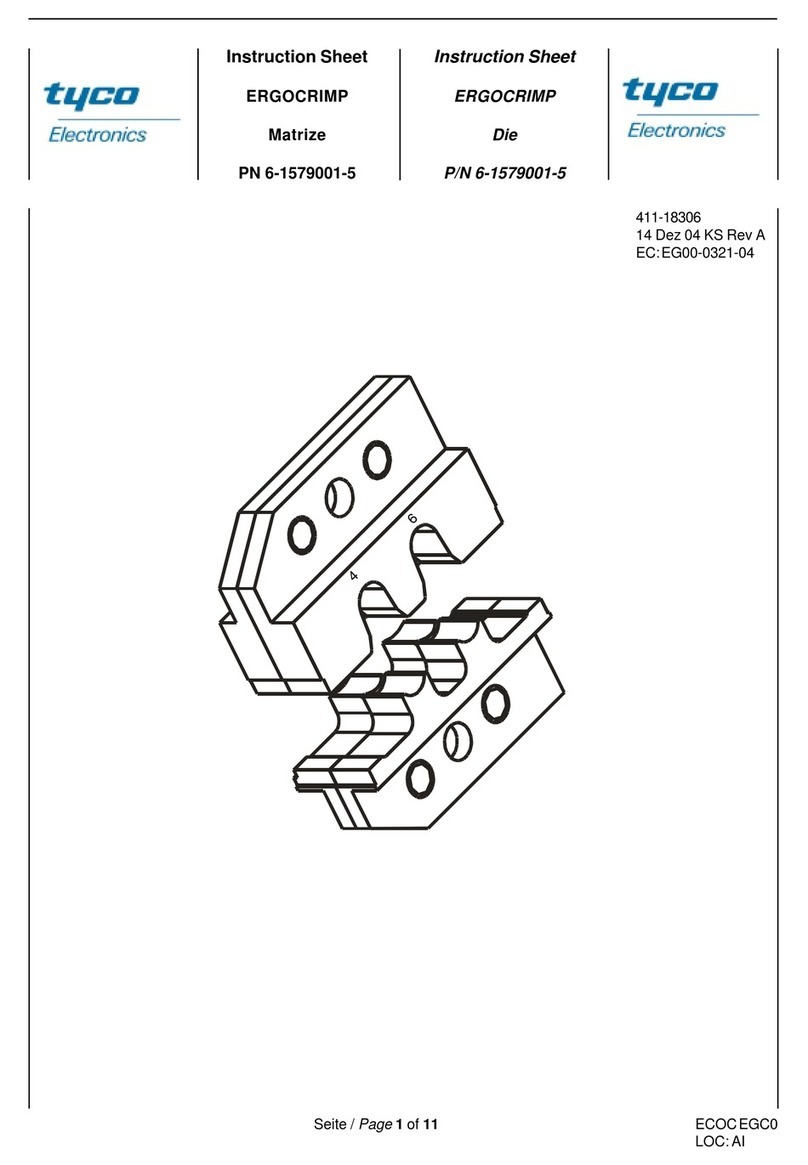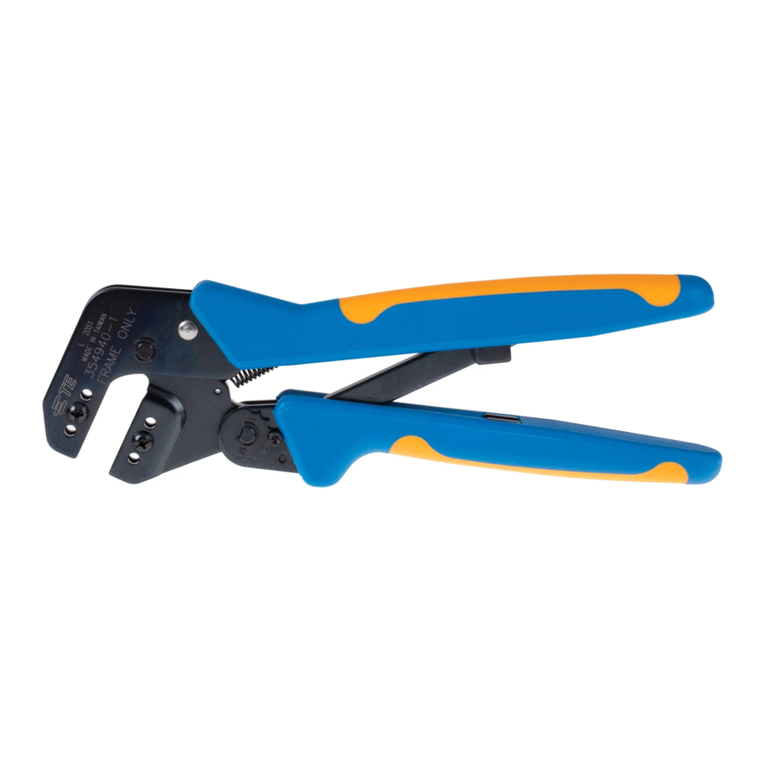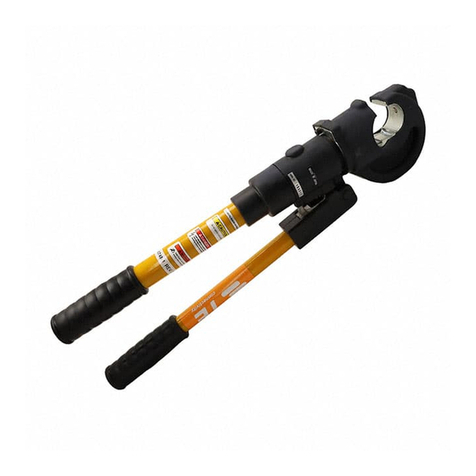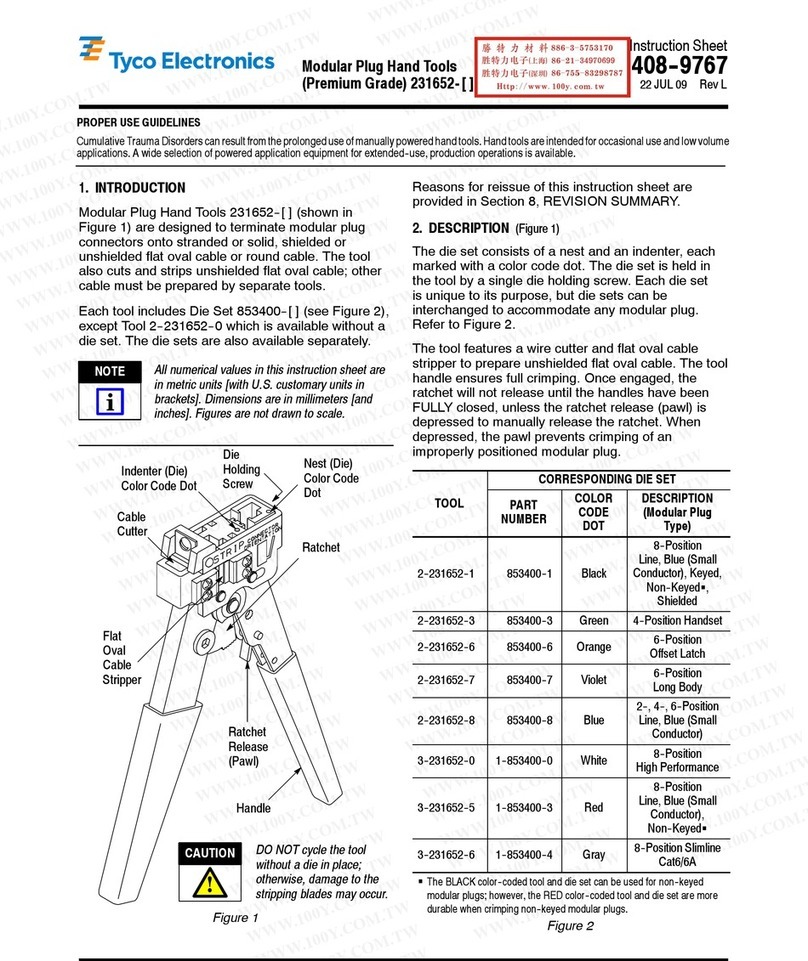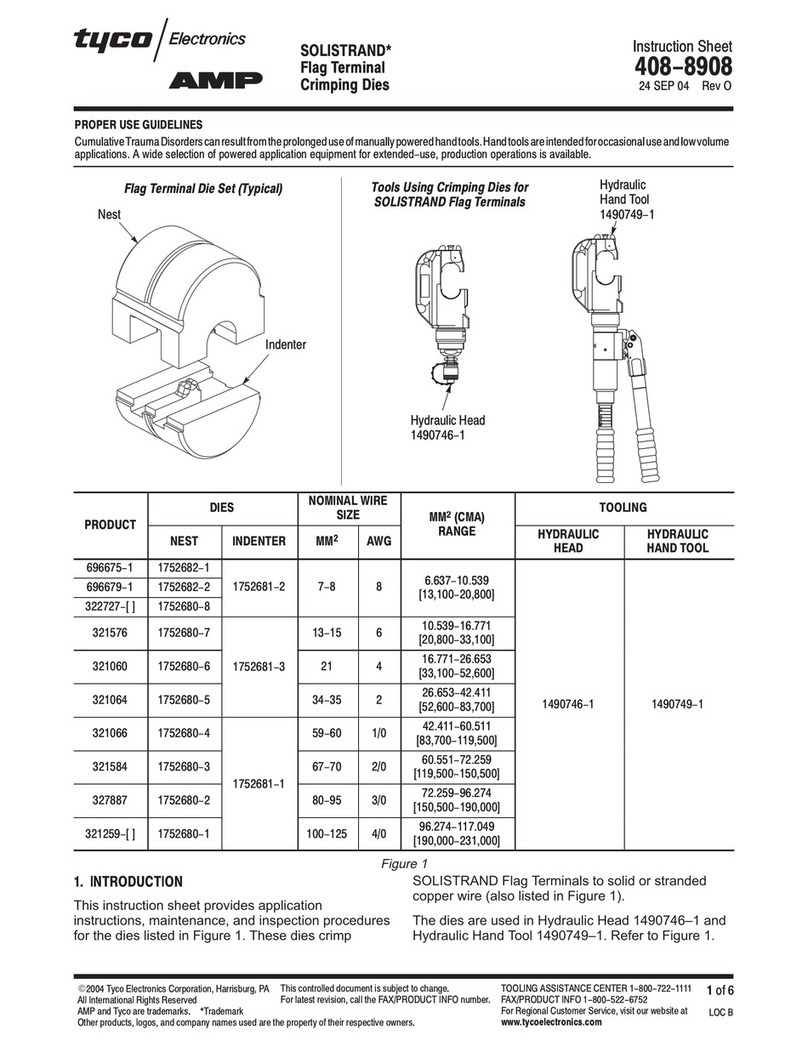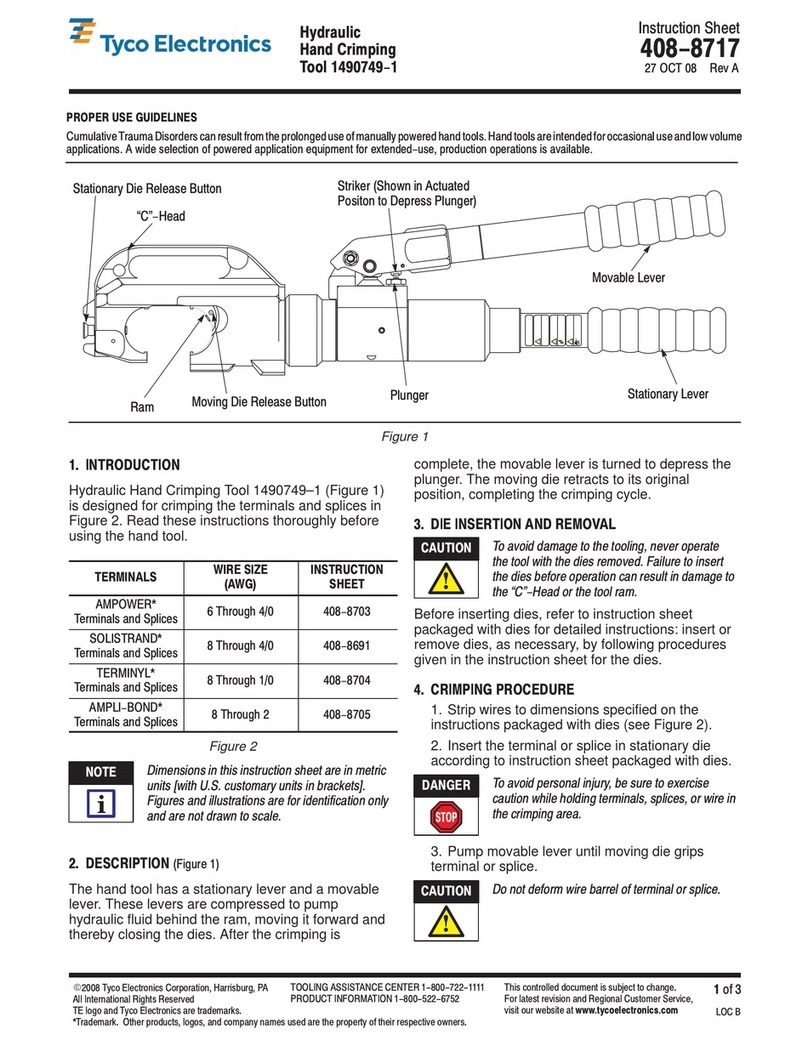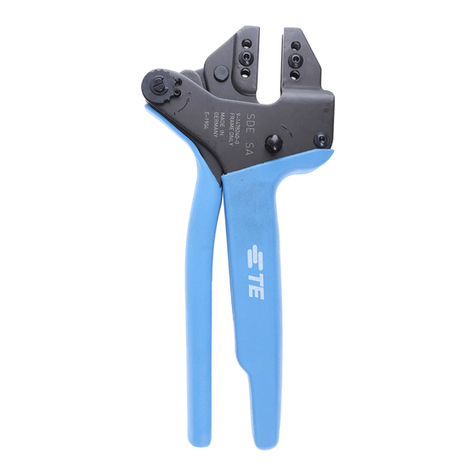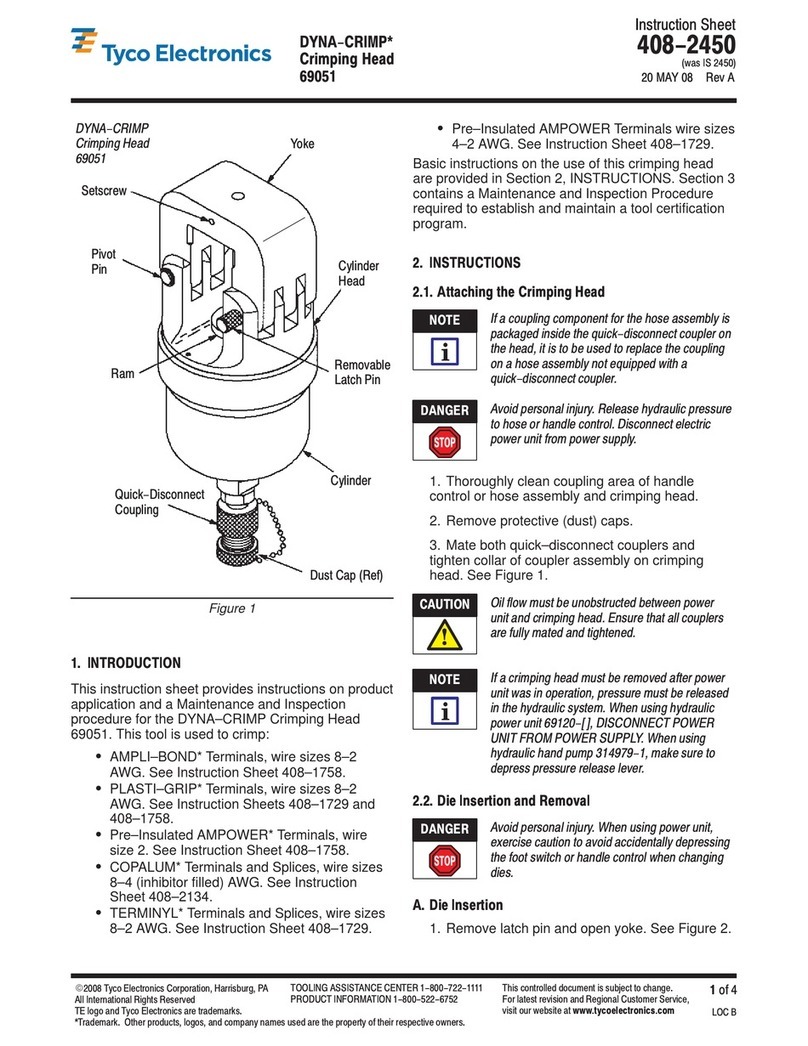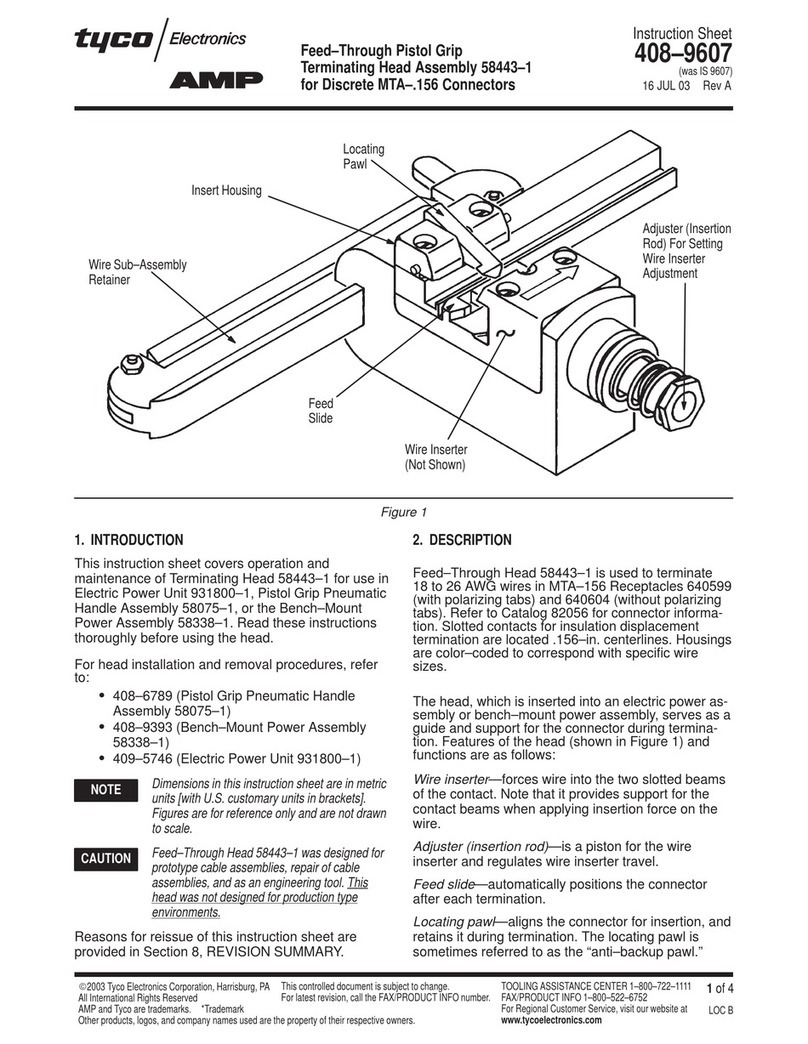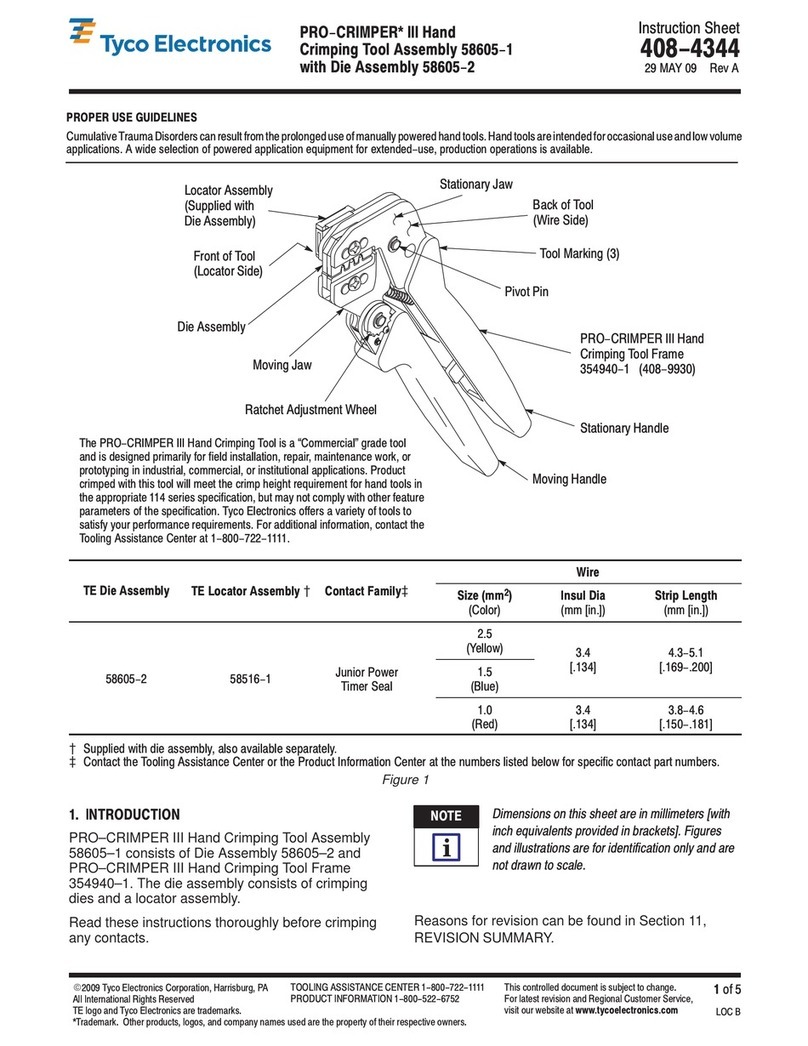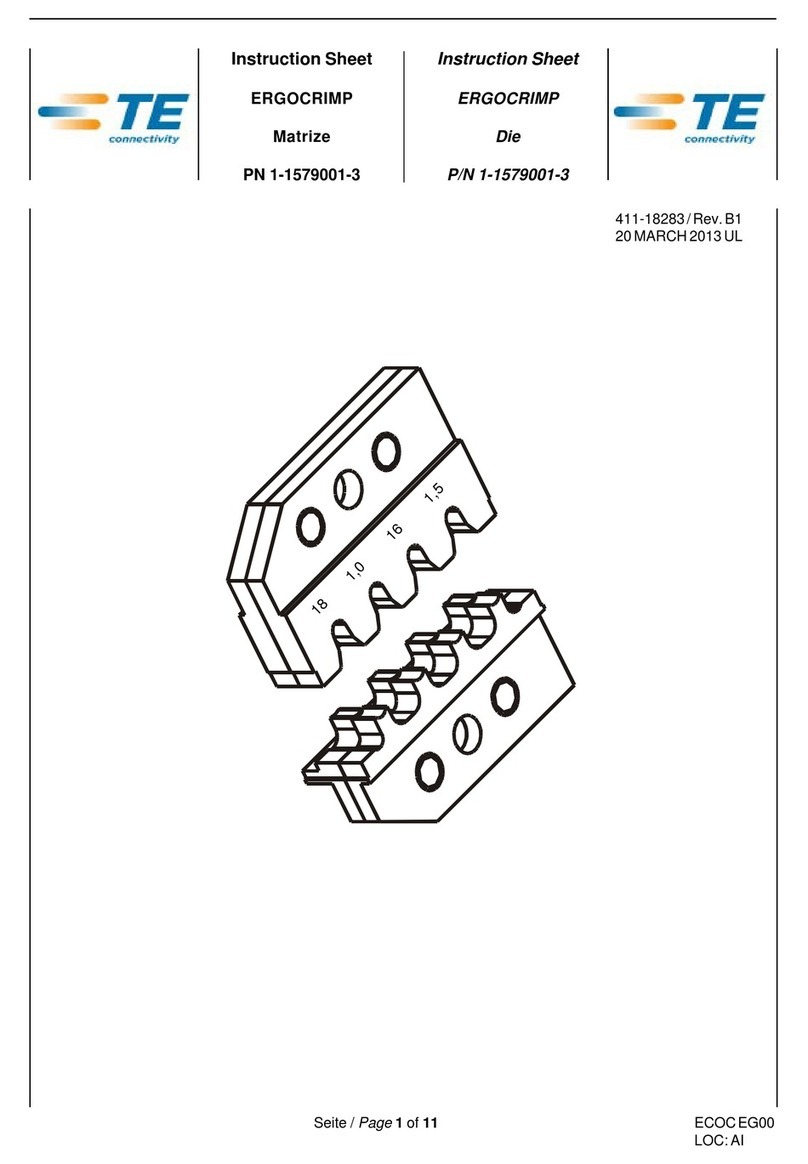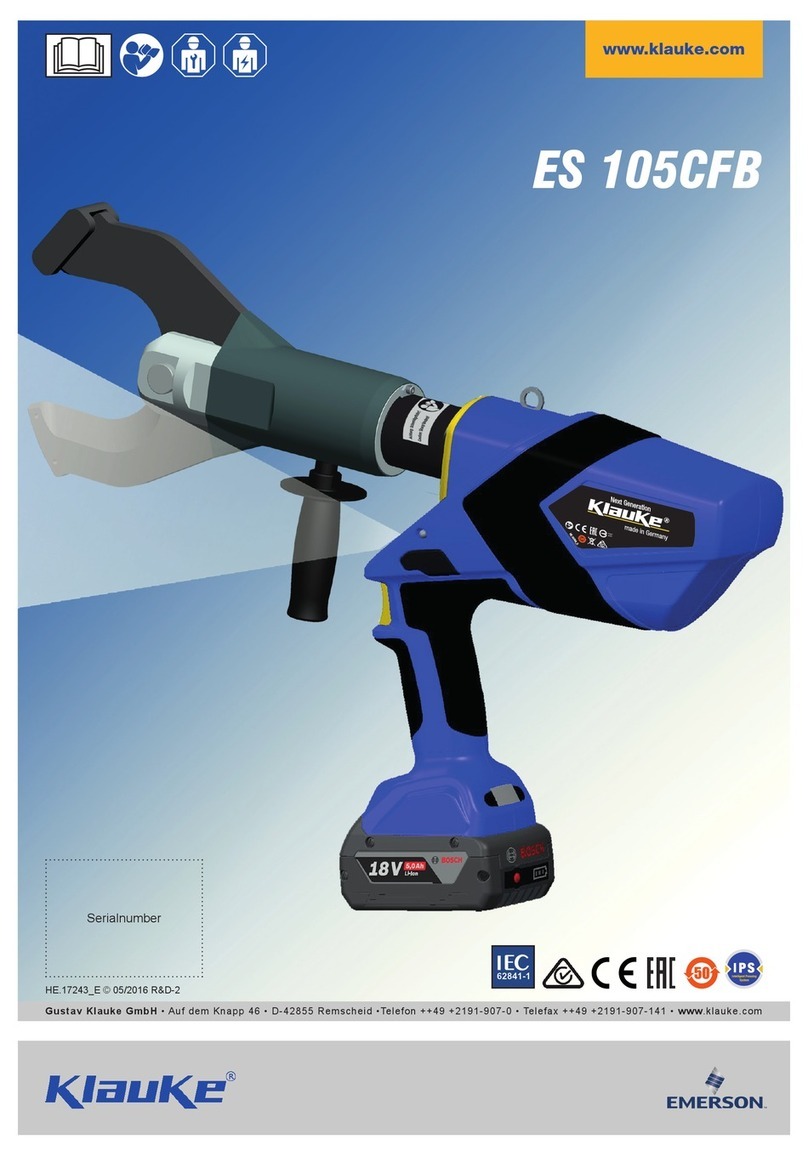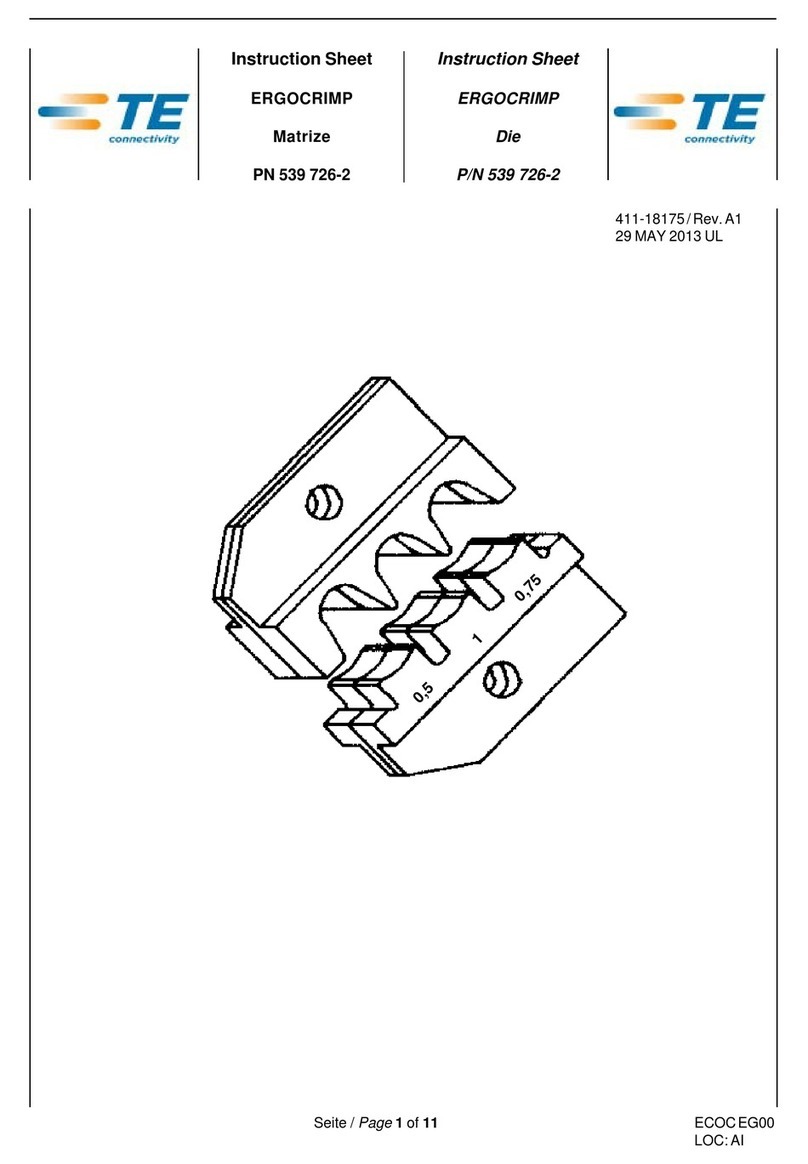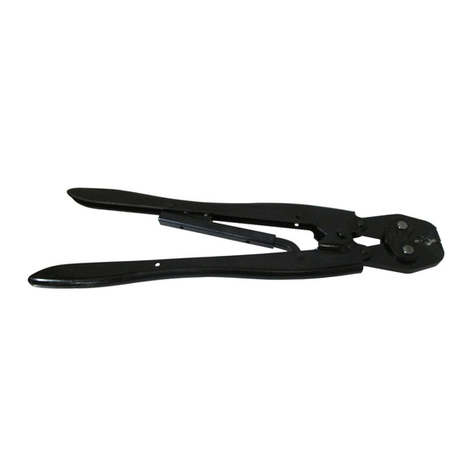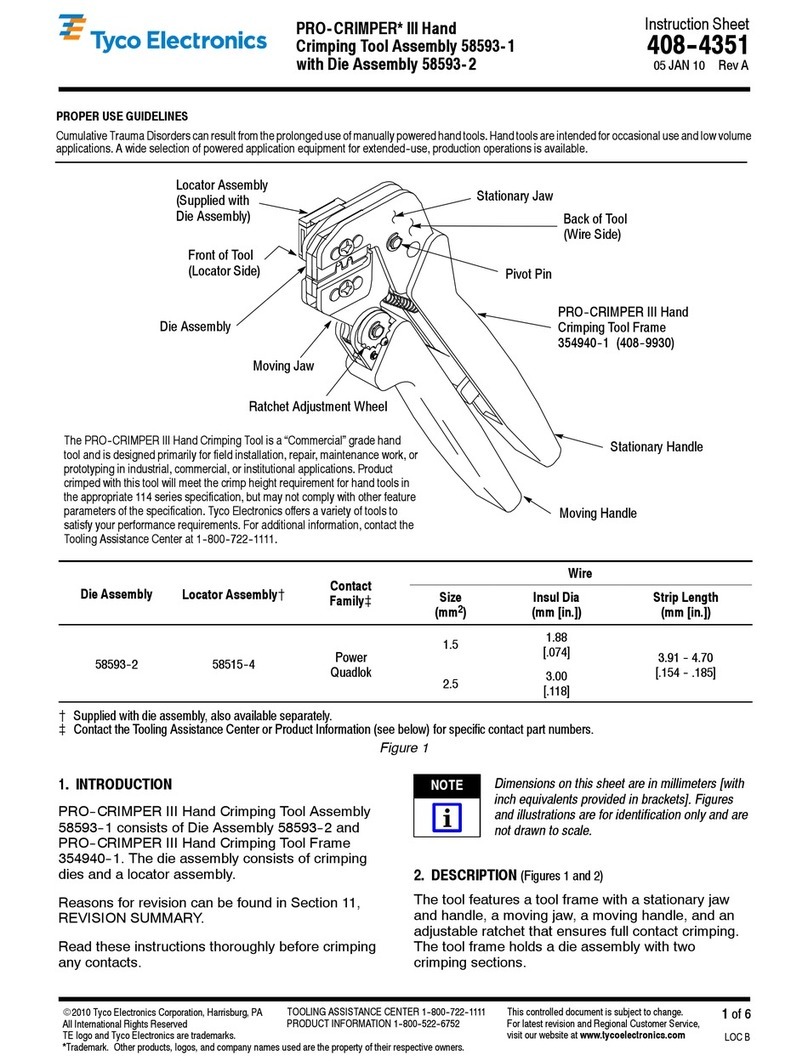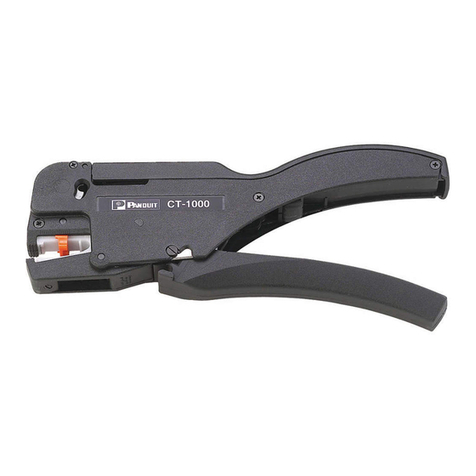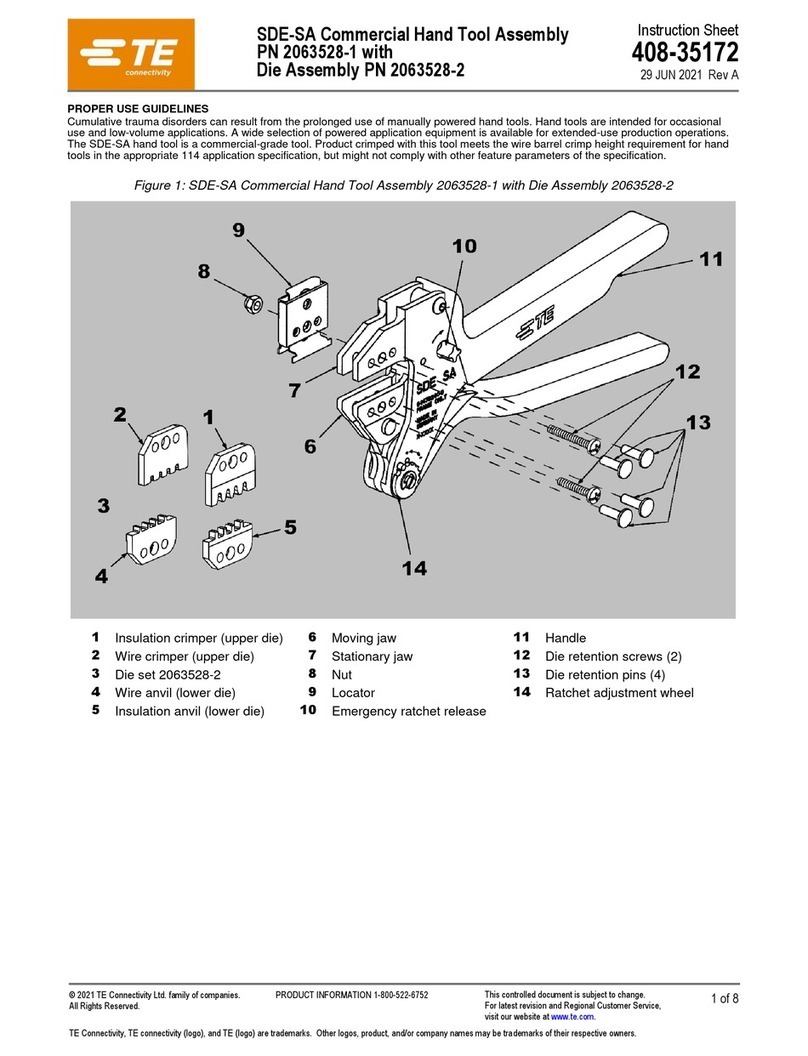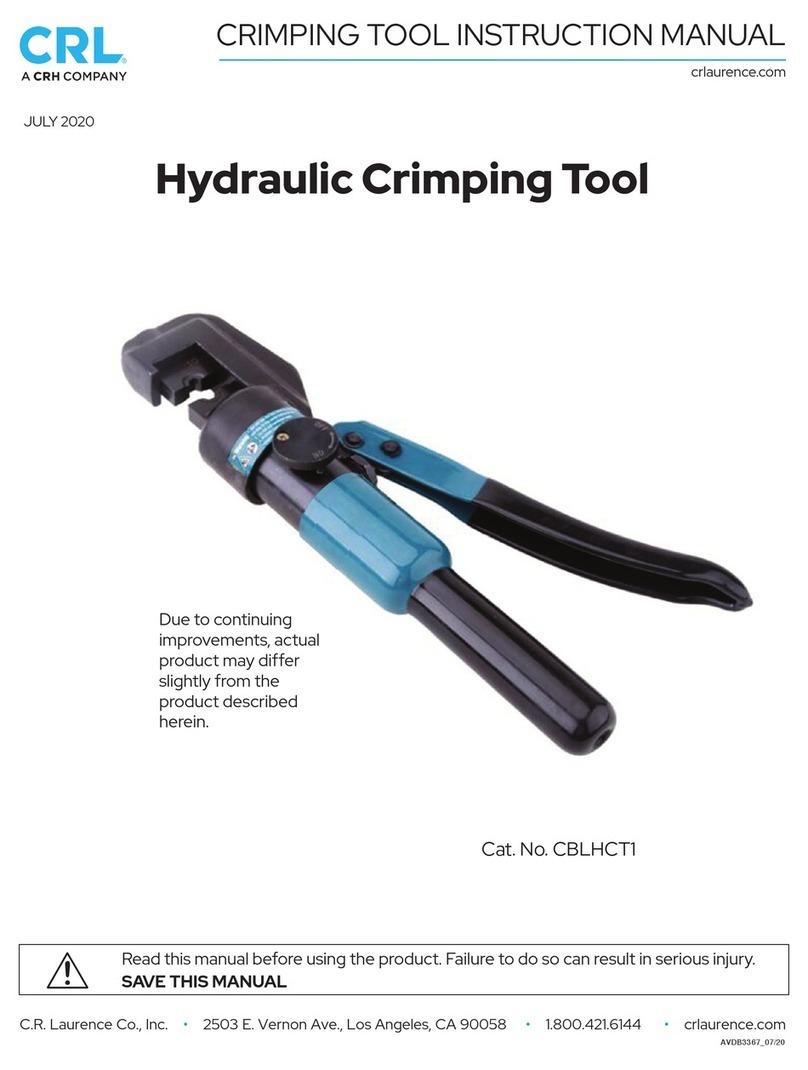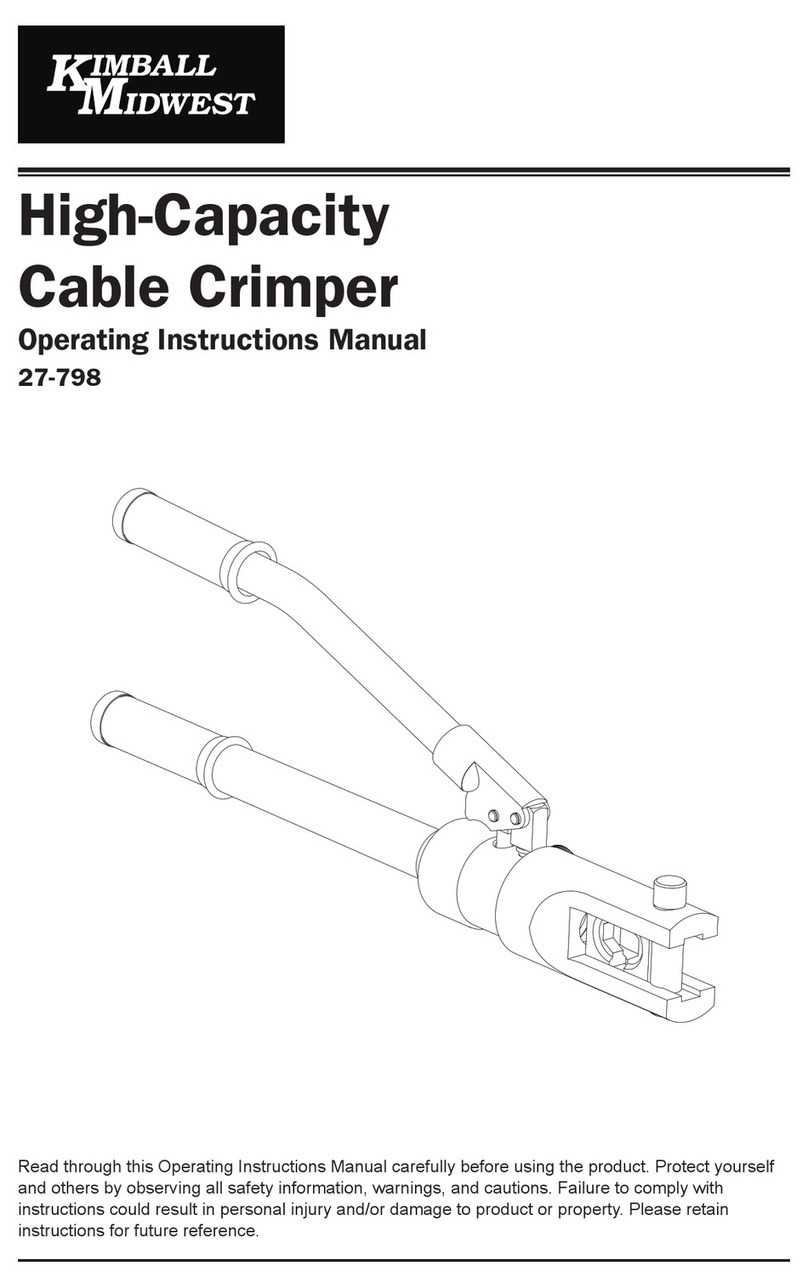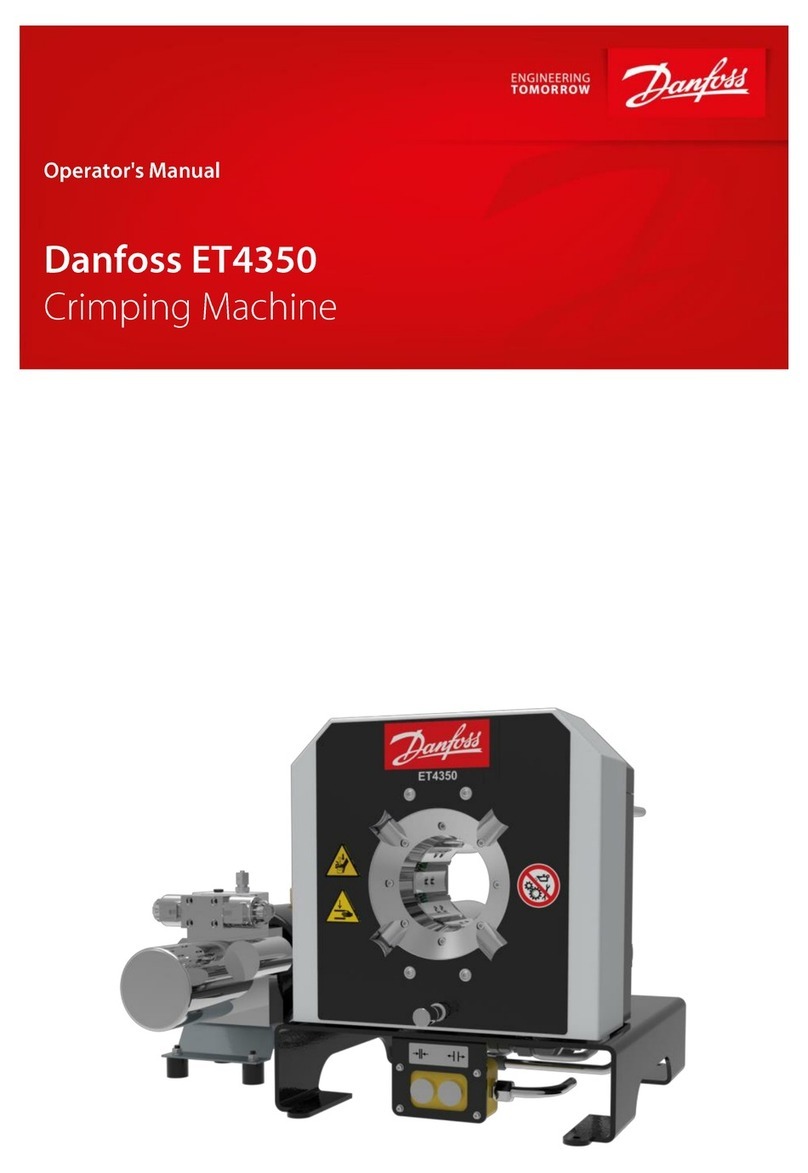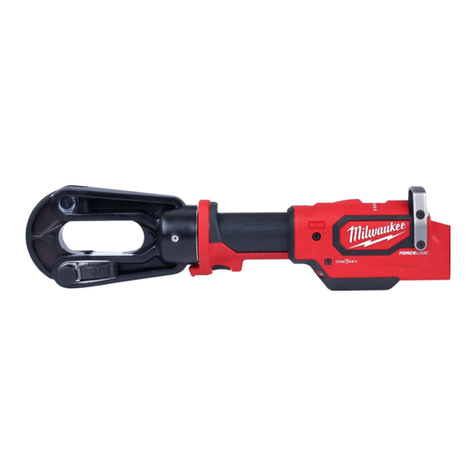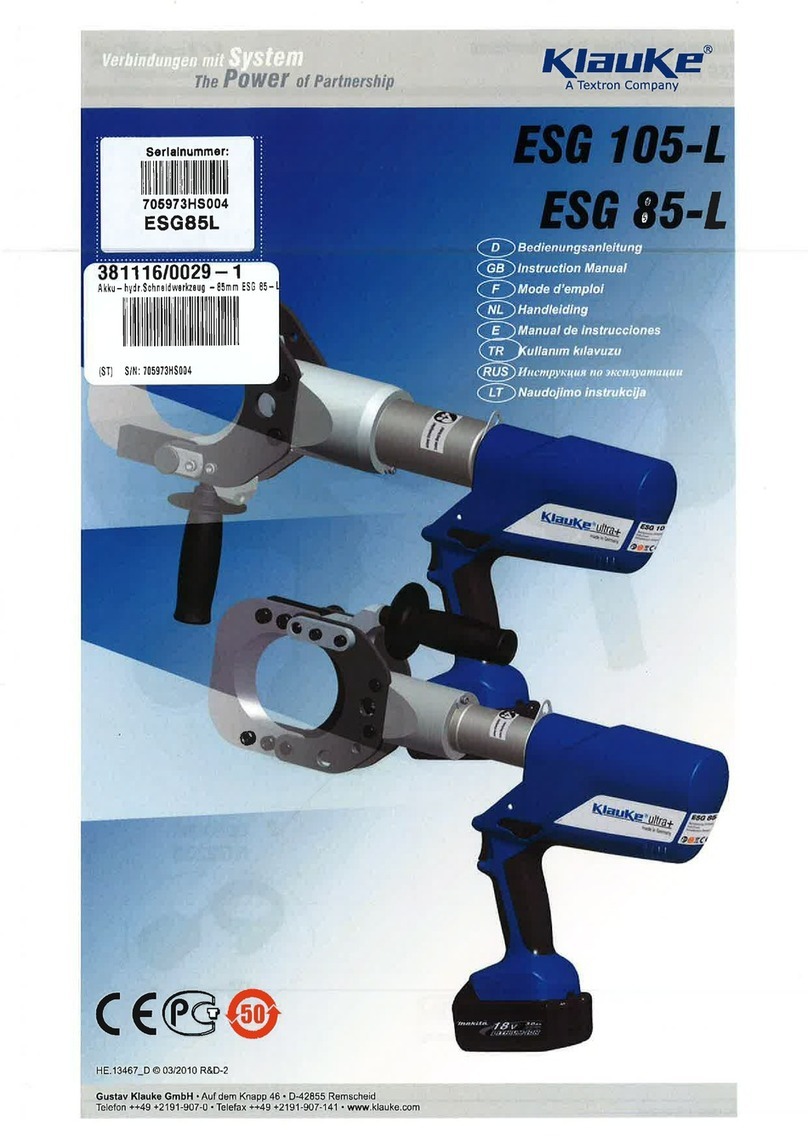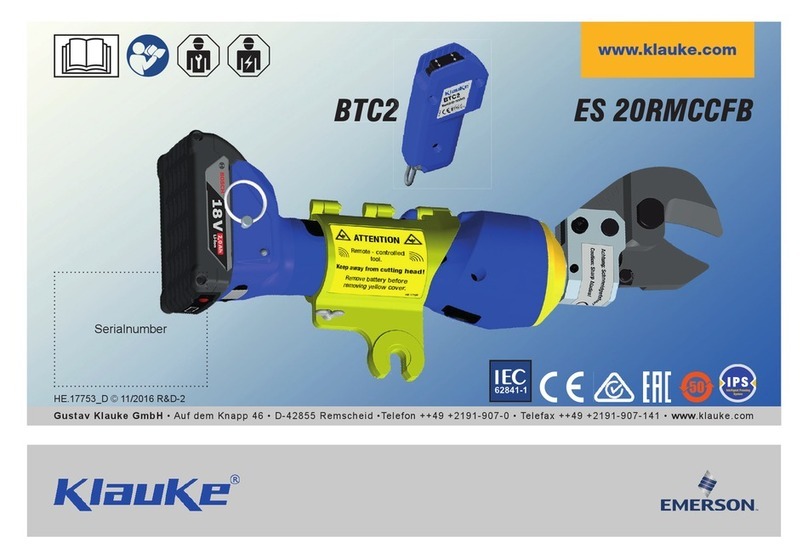
408-2454
Hydraulic Crimping Head 69067
3
of 4Rev
B
Tyco Electronics Corporation
Operating Procedure for Hydraulic Foot Pump 69325-3
Hydraulic Ha d Pump 69325-3 was superceded
by Hydraulic Ha d Pump 314979-1.
Keep the foot pump i a vertical positio . Never
operate the u it without havi g a crimpi g head
attached to the crimpi g head coupli g.
1. Insert the terminal or splice in the stationary die
according to the instruction sheet for the dies being
used. MAKE SURE THE LATCH PIN IS SECURE
before activating the power unit.
2. Pump the upper foot pedal to activate the unit.
Continue pumping until the movable die contact the
terminal or splice and holds it firmly in place. A
sudden decrease in effort required to push the
pedal down will be observed during the initial
build–up of pressure.
3. Insert the stripped wire.
4. Continue pumping until the pressure relief valve
is activated. A slight decrease in effort required to
push the pedal down, accompanied by a snapping
sound, indicates maximum required crimping
pressure has been reached.
5. Press and hold the return pedal until the ram
withdraws from the closed position just enough to
remove the crimped terminal or splice.
If a termi al or splice sticks i the die after
crimpi g, apply a rocki g actio to remove it from
the die.
6. INSPECTION/MAINTENANCE
To avoid perso al i jury, be sure hydraulic
pressure is released a d power supply is
disco ected before followi g i spectio a d
mai te a ce procedures, u less otherwise
specified i the procedure.
Each crimping head is assembled and inspected
before shipment. Tyco Electronics recommends that
the crimping head be inspected immediately upon
arrival, and at regularly scheduled intervals, to ensure
that the crimping head has not been damaged during
handling and use. Frequency of inspection depends
upon the following: care, amount of use, and handling
of the head; type and size of products crimped;
degree of operator skill; and environmental
conditions.
6.1. Cleaning
Remove accumulations of dirt and grease on the
crimping head, especially in areas where dies are
installed and terminals are crimped. Clean the entire
head frequently with a clean, lint–free cloth.
6.2. isual Inspection
Refer to Figure 3 and proceed as follows:
1. With hydraulic pressure released, inspect the
assembled head for nicks, scratches, and cracks.
Inspect for cracks especially at the corners of the
yoke and around the top of the cylinder.
Figure 3
Check These Areas
for Cracks
Check for Excessive
Wear at Pivot Pin
and Latch Pin
Check Die
Areas for
Damage
2. Inspect pivot pin holes and latch pin holes for
wear. Replace parts as needed.
3. Activate power unit. Raise ram to “UP” position.
Inspect flat and round surfaces of ram for galling
(fretting or wear by friction), cracks, or oil leakage.
Release pressure and make sure that ram retracts
smoothly.
4. If head shows evidence of galling, cracks, oil
leakage, or rough cycling, return the crimping head
to Tyco Electronics for repairs. (Refer to Section 7,
REPLACEMENT PARTS AND REPAIR).
6.3. Crimping Head Inspection Procedure
A. With Hydraulic Power Unit 69120-[ ]
If the ram fails to return to the “DOWN” position after
completion of a crimping cycle, the cause may be in
the crimping head. To determine whether or not the
trouble is in the crimping head, press the pressure
release button on the electrical control box or, if the
NOTE
i
NOTE
i
NOTE
i
DANGER
